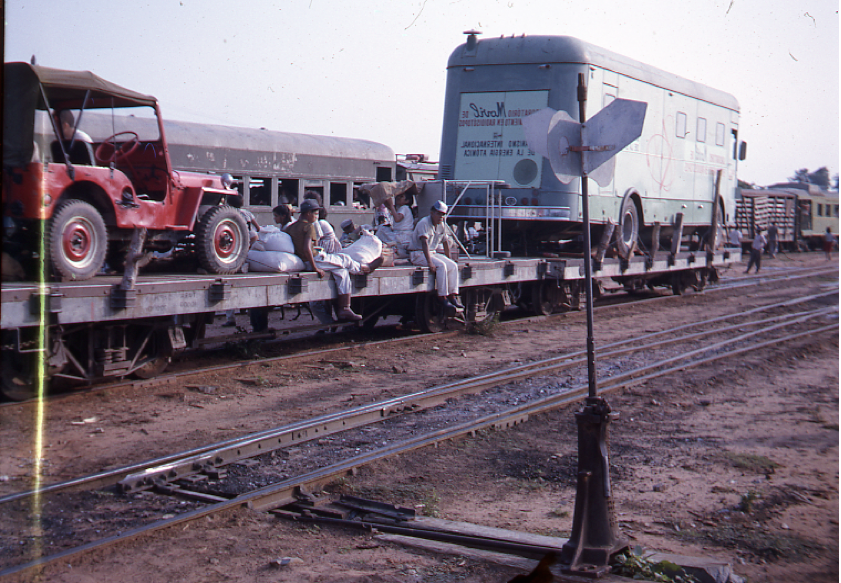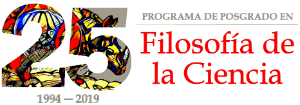

Cite as:
Mateos, Gisela & Edna Suárez-Díaz. 2019. "Radioisotopes interrupted, the 'Atoms for Peace' road trip in Latin America." In "Methodological Interruptions Across the Field and Archive: Doing STS in Mexico", created by Arturo Vallejo. In Innovating STS Digital Exhibit, curated by Aalok Khandekar and Kim Fortun. Society for Social Studies of Science. August.
During our research at the IAEA historical archives in Vienna, we encountered a traffic disruption in the letters of Josef Obermayer, driver of a truck carrying the Radioisotope Mobile Exhibition that traveled through five Latin American countries between 1960 and 1965. To move the truck from Brazil to the Bolivian border, the only available route involved the use of trains. The travel faced many lumps and actual interruptions, including uploading the truck into the train wagons, loading wooden logs into the cauldron, and eventually, the accident damaging the truck’s stirring rods that caught our attention. The variety of mundane obstacles faced by technical assistance programs, provided us with a twist to problematize the received ways in which the movement of knowledge has been conceptualized in the literature of the history of science and technology. More than problems of communication, our research is now focused on the materialities of travel.
At first sight, the history of the travels of an American bus throughout the uneven roads of Latin America hardly seems like a good topic to study science and technology in the region, even in the context of the Cold War. Nevertheless, there were many reasons why this path, or itinerary –our preferred term- is a crucial component to understand how knowledge is internationalized and standardized without appealing to any “universality of knowledge” theory.
We opted to rely on a somewhat unusual perspective for our research, focusing on the dialogue between Josef Obenmayer, the driver of the bus that took the exhibit across Latin America, and Arturo E. Cairo, the official in charge of the technical cooperation programme of the IAEA. The voices of both men, we argue, crystalize the tension between the local and and the transnational, also their political and ideological alignments.
We used two different types of sources to build our tale of the Mobile Radioisotope Exhibition (MRE), the IAEA archive harbors the mail the drivers, Obenmayer and Josef Hãuplt, shared with Cairo. We also used the photographs taken during the trip of the UM2. At first, these images were only of the Mexican part of the travel, but, in a stroke of luck the archivists of the IAEA found photos of other parts of the itinerary that were unidentified. We were able to place them partially and published them for the first time in our book Radioisótopos itinerantes en América Latina (2015).
Anderson, Robert S. 2010. Nucleus and the Nation: Scientists, International Networks and Power in India. Chicago: University of Chicago Press.
Azuela, Luz Fernanda, and José Luis Talancón. 1999. La historia de la energía nuclear en México. 1945–1995. Mexico City: CEPE, IIS, IG and Plaza y Valdés.
Creager, Angela. 2002. “Tracing the Politics of Changing Postwar Research Practices: The Export of ‘American’ Radioisotopes to European Biologists.” Studies in the History and Philosophy of Biology and Biomedical Sciences 33: 367–388.
Creager, Angela. Life Atomic. A History of Radioisotopes in Science and Medicine. Chicago: University of Chicago Press, 2013.
De Greiff, A., and M. Nieto. 2006. “What We Still Do Not Know About South-North Technoscientific Exchange: North-Centrism, Scientific Difussion, and the Social Studies of Science.” In The Historiography of Contemporary Science, Technology, and Medicine, edited by Ronald E. Doel and Thomas Söderquist, 239–259. New York: Routledge.
Drogan, Mara. 2011. “Atoms for Peace, US Foreign Policy and the Globalization of Nuclear Technology, 1953–1960.” PhD Diss., University at Albany, State University of New York.
Eklund, Sigvard. 2001. “Treaty of Tlatelolco.” IAEA Bulletin 11.5 (1969): 32–36. Epstein, William. “The Making of the Treaty of Tlatelolco.” Journal of the History of International Law 3: 153–179.
Gilbert, Joseph M., and Daniela Spenser. 2008. In from the Cold: Latin America’s New Encounter with the Cold War. Durham, NC: Duke University Press.
Hamblin, Jacob D. 2009. “Let There Be Light … and Bread: The United Nations, the Developing World, and Atomic Energy’S Green Revolution.” History and Technology 25.1: 25– 48.
Herran, Néstor. 2009. “Isotope Networks: Training, Sales and Publications, 1946–1965.” Dynamis 29: 285–306.
Hecht, Gabrielle. 2006. “Negotiating Global Nuclearities: Apartheid, Decolonization, and the Cold War in the Making of the IAEA.” Osiris 21.1: 25–48.
Hewlett, Richard G., and Jack M. Holl. 1989. Atoms for Peace and War, 1953–1961. Eisenhower and the Atomic Energy Commission (A History of the United States Atomic Energy Commission). Vol. 3. Berkeley: University of California Press.
Katz, Friedrich. 2004. “La Guerra fría en América Latina.” In Espejos de la Guerra fría en México, América Central y el Caribe, edited by Daniela Spenser, 11–28. Mexico City: SRE/ CIESAS.
Krige, John. 2006. “Atoms for Peace; Scientific Internationalism and Scientific Intelligence.” Osiris 21: 161–181.
Mateos, Gisela and Edna Suárez-Díaz. 2016. "Atomos for Peace in Latin America". Latin American History: Oxford Research Encyclopedias. DOI: 10.1093/acrefore/9780199366439.013.317
Mateos, Gisela, and Edna Suárez-Díaz. 2015. “Clouds, Airplanes, Trucks and People: Carrying Radioisotopes to and Across Mexico.” Dynamis 35.2: 279–305.
Mateos, Gisela, and Edna Suárez-Díaz. 2014. “Peaceful Atoms in Mexico.” In STS in Latin America: Beyond Imported Magic, edited by Eden Medina, Christina Holmes, and Ivan Da Costa, 287–303. Cambridge, MA: MIT Press.
Mateos, Gisela, and Edna Suárez-Díaz. 1997. “We are not a rich country to waste our resources on expensive toys’: Mexico’s version of Atoms for Peace.” Technology and Culture, forthcoming. Medhurst, Martin J. “Atoms for Peace and Nuclear Hegemony: The Rhetorical Structure of a Cold War Campaign.” Armed Forces and Society 24: 571–593.
Wittner, Lawrence. 1997. The Struggle Against the Bomb. Resisting the Bomb: A History of the World Disarmament Movement 1954–1970. Stanford, CA: Stanford University Press.
Zachmann, Karin. 2011. “Atoms for Peace And Radiation for Safety – How to Build Trust in Irradiated Foods in Cold War Europe and Beyond.” History and Technology 27.1: 65– 90.
All Innovating STS exhibits are oriented by nine shared questions in order to generate comparative insight. These are:
ARTICULATION: What STS innovations (of theory, methodology, pedagogy...Read more
Furthering its theme, Innovations, Interruptions, Regenerations , the 2019 annual 4S meeting in New Orleans will include a special exhibit, Innovating STS , that showcases innovations ...Read more
This book presents previously unpublished photoraphs about the travels of the MRE found in the IAEA historical archive.
On December 8, 1953, in the midst of increasing nuclear weapons testing and geopolitical polarization, United States President Dwight D. Eisenhower launched the Atoms for Peace initiative. More than a pacifist program, the initiative is nowadays seen as an essential piece in the U.S. defense strategy and foreign policy at the beginning of the Cold War. As such, it pursued several ambitious goals, and Latin America was an ideal target for most of them: to create political allies, to ease fears of the deadly atomic energy while fostering receptive attitudes towards nuclear technologies, to control and avoid development of nuclear weapons outside the United States and its allies, and to open or redirect markets for the new nuclear industry. The U.S. Department of State, through the Foreign Operations Administration, acted in concert with several domestic and foreign middle-range actors, including people at national nuclear commissions, universities, and industrial funds, to implement programs of regional technical assistance, education and training, and technological transfer.
Mateos, Gisela and Edna Suárez-Díaz. (2016) "Atomos for Peace in Latin America". Latin American History: Oxford Research Encyclopedias. DOI: 10.1093/acrefore/9780199366439.013.317
https://oxfordindex.oup.com/view/10.1093/acrefore/9780199366439.013.317?...
The transnational approach is synonymous with the language of movement, circulation, and flows across borders and between nodes in a network. Notwithstanding this focus on movement in this genre of historical analysis, we notice the absence of attention to travel itself, as if the movement from...Read more